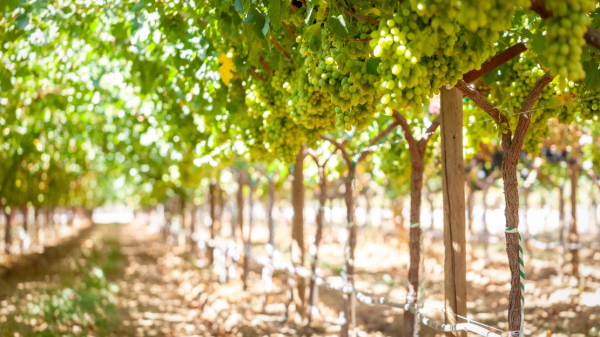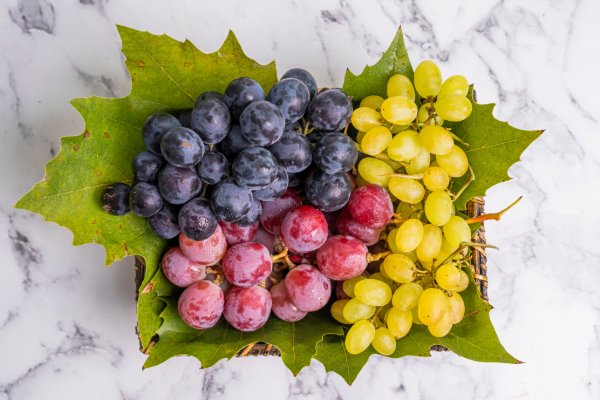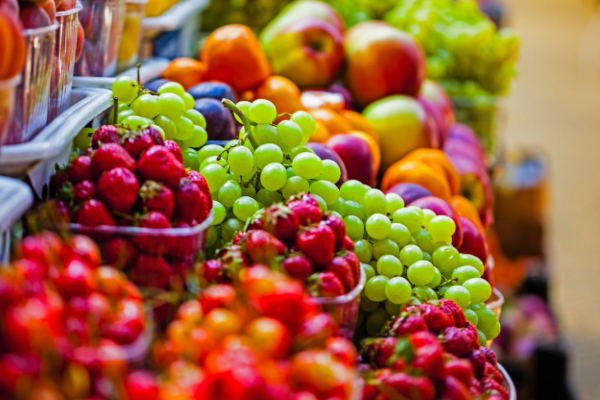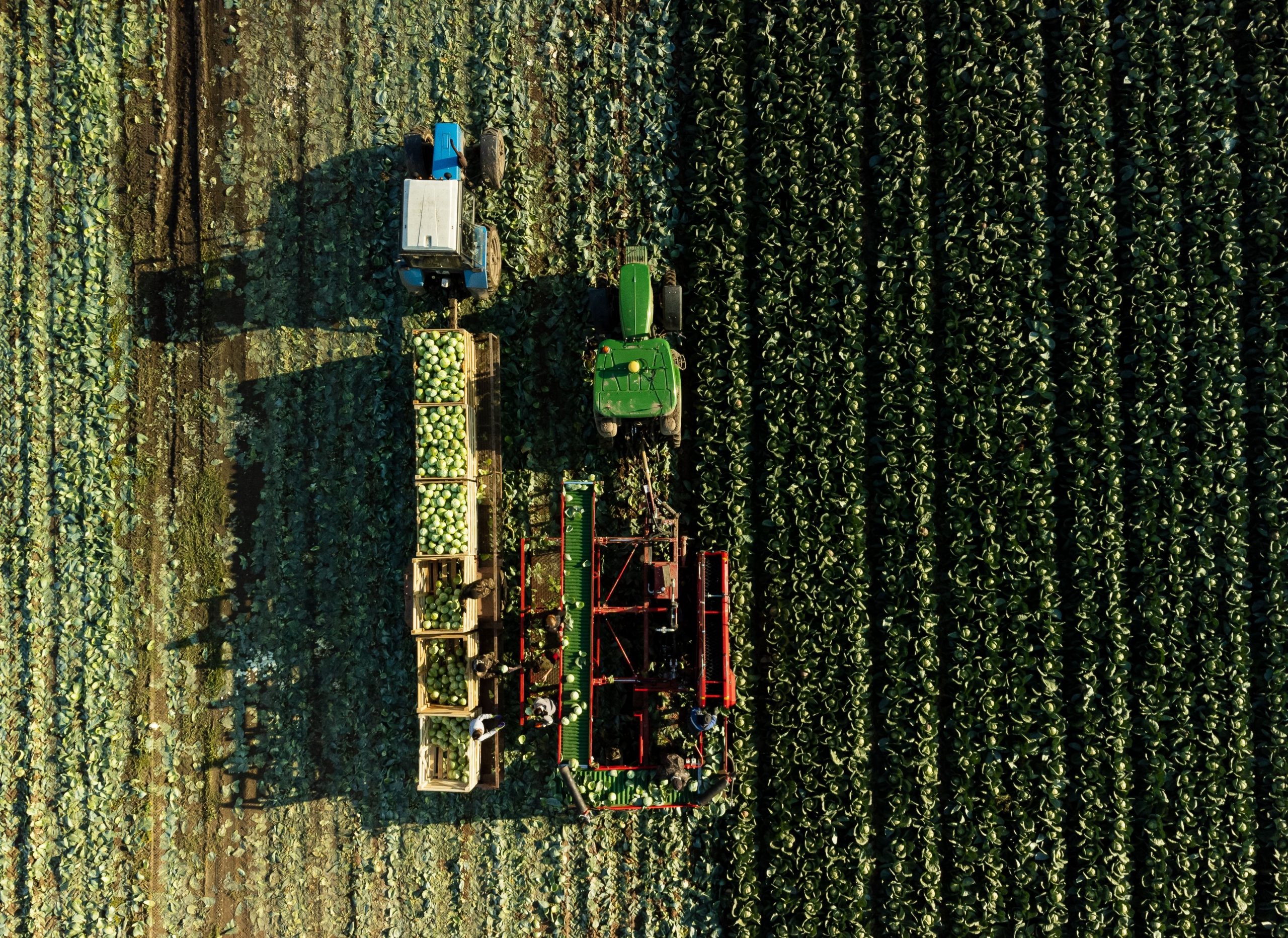Welcome to Blue Book!
Are you ready to join the thousands of companies who rely on Blue Book to drive smarter decisions? View our plans and get started today!
Still have questions? We’d love to show you what Blue Book can do for you. Drop us a line– we’ve been waiting for you.

In this article
California table grape season has begun anew, with the Coachella and San Joaquin Valleys once again providing the vast majority of domestic supply. Can this year match 2024?
Ian LeMay, president of the Fresno-based California Table Grape Commission BB #:153597, certainly believes so.
Last year, according to the Commission, California shipped 91.5 million 19-pound boxes of table grapes to 56 worldwide markets.
While the majority remained stateside, 27 percent of California’s volume was exported. Australia, Canada, Japan, Mexico, and Taiwan dominated as destinations for the state’s more than 80 varieties.
The next several months are prime time, so LeMay encourages everyone to seek out the Golden State’s bounty. “There is surely a California grape to delight anyone.”
Variety Bonanza
Of course, some grape varieties are more in demand than others. There are shoppers who prefer green, others red. Some don’t mind seeds, though most consumers prefer seedless.
And what about specialty grapes like the very sweet Cotton Candy or Moon Drops, or the elongated darkly delicious Witch Fingers?
During the 2022-23 season, per the Commission, California’s top volume varieties included Autumn Royal, Blanc and Flame Seedless, Scarlet Royal, and Sugraone.
It may surprise some that the California Table Grape Commission itself, through its work with the U.S. Department of Agriculture, holds the U.S. patents and rights to a handful of varieties.
These varieties—Autumn King, Princess, Scarlet Royal, Summer Royal, and Sweet Scarlet—are then licensed to growers.
Other popular varieties grown in the Golden State are licensed from breeders and developers like IFG (International Fruit Genetics, based in Bakersfield) and Sheehan Genetics (now owned by SNFL Group in Murcia, Spain).
These varieties, most of which are trademarked, are sold under various names such as Allison, AutumnCrisp, Great Green, Summer Bliss, Sorbet, Sweet Celebration, and Yummy Crunch.

Recurring Challenges
Despite their popularity and being highly sought after by retailers and consumers alike, California’s table grape sector is not without its hardships.
But this is where the Commission can make a significant difference. LeMay says the 2025-26 season’s global marketing campaign is already underway. The campaign is designed for both businesses and consumers, promoting California grapes domestically and in 21 export markets.
“The consumer portion of the campaign utilizes health messaging, which has resulted from 25 years of research,” he shares. This includes new snack and meal recipes as well as “an extensive library of creative content.”
Plus, LeMay notes, the campaign offers “a suite of promotional tools and incentives” for retailers, including contests, digital promotions, in-store sampling, point-of-purchase materials, and registered dietician programs among others.
California grape growers face other obstacles from field to shelf too, such as California’s increasingly erratic weather, along with water woes, high input costs, and labor. LeMay says the Commission is working on these challenges too.
“Innovations in the table grape growing and harvesting process are also an objective,” he mentions, noting the “integration of ag-tech, sustainable pest management practices, irrigation technologies, and improved labor efficiencies,” all of which are current agricultural goals.
Gauging Competition
Every season, once grapes are harvested and ready to ship, other difficulties can crop up, such as competition.
LeMay admits that California grapes compete with other fruit from within the state, such as berries, citrus, and tree fruit like apples.
The berry sector alone has experienced significant growth the last few years.
Tammy Collum, in sales for Bakersfield, CA-based Vanguard Direct, LLC BB #:338552, says this can work against grapes too, even though they’re part of the berry group botanically.
“Snacking ability, recipes, all those things are very similar,” Collum points out, and all are competing for consumer dollars and basket space.
There’s also the plethora of grapes themselves. “We had more reds than greens,” Collum notes of Peru’s supply this past season, which generally runs from December through May.
“In the last eight to ten years, with better green varieties coming, demand for reds has diminished,” she explains. So Vanguard Direct usually has three greens for every one red. Yet, Collum says, “This year, we were almost like fifty-fifty.”
There’s more wrangling once grapes actually make it to grocery stores.
“Retailers still fight for the highest margins,” contends Collum, though she believes there’s plenty of room for improvement in the produce departments of many stores.
Ultimately, like many categories, she concedes: “It’s a money game.”

Seasonal Imports
When the California table grape season winds down in January, imports take over. Brazil is often the earliest, but Peru, Chile, and Mexico export in far greater numbers.
Peru generally begins in December, followed by Chile in March, and Mexico in May, with some overlap before Mexico finishes up in July.
Collum is a big fan of Peruvian grapes. Vanguard Direct is a grower-shipper and exporter-importer, handling the marketing and sales of Peruvian grapes for the United States and Canada.
The company grows patented varieties (Allison, AutumnCrisp, Ivory, Sweet Favors, Sweet Globe) near Southern Peru’s Ica city. Collum says its lush climate often yields larger grapes than California—and faster, too.
“We can plant some vineyards and within 18 months have commercial volume,” she mentions. “In the United States, it takes three years.”
She also notes the mounting pressures on California growers, from surging costs to water shortages, with some growers converting to less labor-extensive crops.
Peruvian growers are focused on increasing output. “We set records,” Collum says, “and next year it will continue to grow.”
Vanguard Direct is prioritizing early varieties like Ruby Rush for next season. “So retailers can easily transition from California to us,” she says.
Another strategy is to grow more robust varieties such as Adora, Jack’s Salute, and Sweet Celebration. “They’re not only appealing based on flavor and crunch,” Collum observes, but she says they have better storage potential, too.
Newly developed grapes also help by being simpler to grow, she says. They often require less water, labor, and fertilizer, or the need to enhance natural coloring.
Highs and Lows
Like California, growers in other countries face their own seasonal challenges, including the usual concerns: weather, pests, and disease, along with ones no one foresees.
Collum says this past season was a mixed bag: there was high output in Peru despite natural hardships in the field, but then there were too many grapes in the U.S. market at the same time.
“Northern Peru was short on water,” she explains. Then, she adds, “Southern Peru started two weeks later than normal.”
Next came worries about a port strike. Anticipating the strike, importers brought in much of Northern Peru’s supply early and put it in storage.
“If there’s a port strike,” she points out, “the food just sits on the water or doesn’t get sent to the United States at all.”
But there wasn’t a strike so all of the shipments arrived in the United States earlier than usual last winter, glutting the market.

“It created a crash,” Collum laments. “Northern Peru dropped its prices to move its stored product,” which then made it hard for Southern Peru to sell its fresh produce at a good price.
“It was probably one of the worst import seasons in the last four or five years,” she admits.
Luckily, Collum says, this all occurred before tariffs were imposed by the Trump administration. “We already had our product on the water—because it was already shipped, it doesn’t get taxed.”
She is, however, preparing for tariffs to affect next year’s supply, given Peru’s current 10-percent rate.
Uncertain Forecast
It’s too early to predict what’s in store for next year’s season, in California or elsewhere. The future looks bright for domestic and international production, though nothing is ever guaranteed.
The bottom line, however, remains the same: grapes are delicious and healthy. They are a mainstay of retail produce departments and in foodservice.
Better yet, they’re popular with consumers of all ages, and remain an enduring part of everyday life throughout much of the world.





![CEO’s Perspective: A Primer on Tariffs [updated]](https://www.bluebookservices.com/wp-content/uploads/2025/04/CEO.png)



